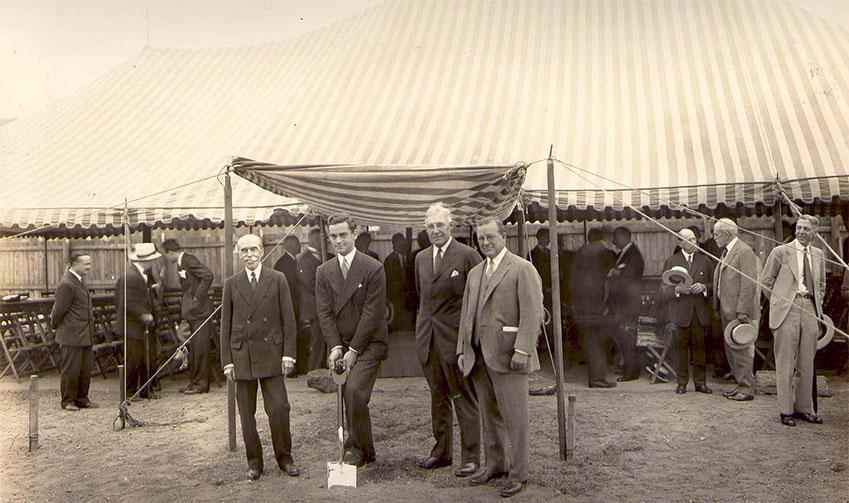Submitted by chh4011 on March 24, 2016 - 9:28am
The Departments of Medicine and Psychiatry establish the Neurological Laboratory Division, led by Dr. Harold Wolff, to conduct neurological and psychobiological research. Dr. Wolff is well regarded for his research in the fields of psychosomatic illness and headaches.
Later, in 1954, Dr. Wolff organizes the pioneer Human Ecology Program.
Submitted by chh4011 on March 24, 2016 - 9:23am
The Departments of Medicine and Psychiatry establish the Internal Medical Laboratory Division, led by Dr. Ade Milhorat, for general medical, biochemical, and pharmacological research. Dr. Milhorat is well regarded for his muscular dystrophy research. (Photo taken in 1952 by the New York Times.)
Submitted by chh4011 on March 23, 2016 - 4:31pm
A blood bank is established for blood transfusions in the Department of Obstetrics & Gynecology in 1938. In 1939, the Blood Bank is more formally organized under the Central Laboratories. The first blood bank was founded at the Cook County Hospital in Chicago in 1936. In New York, Mt. Sinai opened a blood bank in May 1938. (Photo taken in 1968 by Camera Associates.)
Submitted by chh4011 on March 23, 2016 - 3:07pm
The calorimeter, used in metabolism research conducted by the Russell Sage Institute of Pathology and Cornell University Medical College, is moved to New York Hospital from Bellevue Hospital. Connected to the research is a small six-bed ward, which would later become the oldest ward dedicated to metabolism research in the country. Dr. Eugene DuBois leads the research, which began in 1913 under the leadership of Dr. Graham Lusk, chair of the Department of Physiology.
Submitted by chh4011 on March 23, 2016 - 10:10am
Throughout the years, the medical center has grown to become a premier health center. Some of the people who produced pioneer research or treatments were Drs.
Submitted by chh4011 on March 23, 2016 - 10:07am
Both New York Hospital and Cornell University Medical College maintained individual control of their respective departments and administrative operations. The medical center was structured on a university system with five major clinical departments: medicine, surgery, pediatrics, obstetrics & gynecology, and psychiatry linked administratively. In these five clinical areas, the chairs of the college departments were the heads of the corresponding hospital departments. The pathology and radiology departments of the hospital and medical college were also linked in the same way.
Submitted by chh4011 on March 23, 2016 - 10:00am
Submitted by chh4011 on March 23, 2016 - 9:22am

The Central Brewing Company and several row houses that were on the site of the medical center were demolished in 1929.
In what databases does GET IT appear?
PubMed, Ovid (select databases), Faculty of 1000, and Web of Science, among others.
Can I use this service from off campus?
Yes, provided you have dialed into the network, activated VPN on your computer, or logged in using EZProxy.



